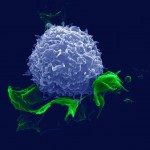Link to Pubmed [PMID] – 12891066
AIDS 2003 Aug;17(12):1803-9
OBJECTIVE: To determine mortality due to end-stage liver disease (ESLD) in a nationwide cohort of HIV-infected patients 5 years after the introduction of highly active antretroviral therapy (HAART) and to compare this with that observed before and during the early years of HAART.
DESIGN: and methods: All departments of internal medicine and infectious diseases from the GERMIVIC Study Group prospectively recorded all deaths in HIV-infected patients during 2001. Sixty-five departments, following a total of 25 178 HIV-infected patients, participated in the study. Results were compared with those of previous surveys conducted using similar methodology in 1995 and 1997.
RESULTS: Among 265 deaths observed during 2001, 129 (48.7%) were related to AIDS, 38 (14.3%) to ESLD, and 98 (36.7%) to other causes. Mortality due to ESLD represented 28% of non AIDS-related deaths; 36 of the 38 patients (95%) dying from ESLD had chronic hepatitis C virus (HCV) infection. In 2001, deaths due to ESLD (14.3%) were significantly more frequent than in 1995 (1.5%; P < 0.01) and 1997 (6.6%; P < 0.01). During this interval, the prevalence of hepatocellular carcinoma as a cause of death increased (1995, 4.7%; 1997, 11%; 2001, 25%; P < 0.05), as did alcohol consumption (P < 0.01).
CONCLUSIONS: In the post-HAART era, ESLD due to HCV is a growing cause of mortality in HIV-infected patients. Increased longevity attributable to HAART, and a higher prevalence of alcohol consumption, are probably involved in this trend.

